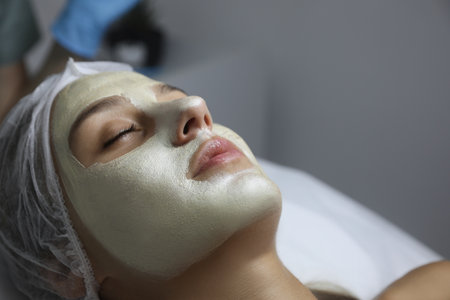Understanding Melanin: The Science Behind Skin Pigmentation
Melanin is a naturally occurring pigment found in the skin, hair, and eyes of humans and other organisms. Its primary biological role is to protect the skin from the harmful effects of ultraviolet (UV) radiation by absorbing and dissipating it. The amount and type of melanin produced by specialised cells called melanocytes determine an individuals skin tone, resulting in the wide spectrum of complexions seen across the globe. In the context of aesthetic procedures, this scientific foundation is crucial as differences in melanin levels can influence how skin responds to various treatments. For example, individuals with higher concentrations of eumelanin—predominant in darker skin types—tend to have greater natural UV protection but may also face unique challenges related to pigmentation changes or scarring post-procedure. Conversely, those with lighter skin tones, characterised by lower melanin content, are more susceptible to sun damage but might experience different procedural risks. Understanding these biological nuances is essential for tailoring aesthetic interventions that are both effective and safe for patients from diverse backgrounds.
2. The British Skin Spectrum: Diversity and Cultural Perceptions
Britain is renowned for its rich tapestry of cultures, and this diversity is clearly reflected in the wide spectrum of skin tones found across the UK. From fair, porcelain complexions to deep, richly pigmented skin, the British population encompasses an array of melanin variations due to centuries of migration, mixed heritage, and global influences. Understanding this diversity is essential for anyone considering or performing aesthetic procedures, as individual needs and outcomes can vary significantly based on skin tone.
The Range of Skin Tones in the UK
The Fitzpatrick Scale, a dermatological classification system, is commonly used to categorise skin types by their response to ultraviolet light exposure. In the UK, all six Fitzpatrick types can be observed, though Types I–IV are most prevalent. Here’s a summary:
| Fitzpatrick Type | Typical Characteristics | Common Ancestry Groups in the UK |
|---|---|---|
| I (Very Fair) | Pale white; always burns, never tans | Anglo-Saxon, Celtic |
| II (Fair) | Fair skin; usually burns, tans minimally | Northern European |
| III (Medium) | Darker white skin; sometimes mild burn, tans uniformly | Mediterranean, Mixed Heritage |
| IV (Olive/Brown) | Light brown skin; rarely burns, tans easily | South Asian, Middle Eastern |
| V (Dark Brown) | Darker brown skin; very rarely burns, tans profusely | African-Caribbean, Indian Subcontinent |
| VI (Deeply Pigmented) | Deeply pigmented dark brown to black; never burns | African, Afro-Caribbean |
Cultural Perceptions and Attitudes Towards Skin Tone in Britain
The UK’s approach to skin tone is shaped by both historical context and modern multiculturalism. While fair skin was historically idealised within certain British circles—often associated with aristocracy and privilege—today’s society increasingly celebrates diversity. Campaigns promoting inclusivity have encouraged broader representation in media and aesthetics. However, societal attitudes can still vary:
- Self-Image and Confidence: Many individuals seek aesthetic treatments to address pigmentation concerns or to enhance their natural complexion, influenced by both personal preference and societal standards.
- Aesthetic Preferences: Trends fluctuate between favouring luminous pale skin to embracing glowing darker tones, often driven by fashion and celebrity culture.
- Cultural Sensitivities: Practitioners must be culturally aware and sensitive when discussing treatment options with clients from different backgrounds.
The Importance for Aesthetic Practice
This diverse landscape means that practitioners must adopt a tailored approach when advising on or performing cosmetic procedures. Recognising how different levels of melanin influence both risks and desired outcomes is fundamental for achieving optimal results while respecting individual identities and cultural values.

3. Melanin and Aesthetic Procedures: Key Considerations
Understanding the role of melanin is essential when planning and performing aesthetic procedures, as skin tone can significantly influence both the approach and the outcome. Melanin levels vary greatly among individuals, with darker skin containing more melanin and lighter skin having less. This difference is not merely cosmetic; it has crucial implications for how the skin responds to various treatments.
How Melanin Affects Cosmetic Treatment Choices
Practitioners in the UK must take into account a patient’s Fitzpatrick skin type—a classification system based on the amount of melanin present—when recommending procedures such as laser therapy, chemical peels, or microneedling. Higher melanin levels in darker skin types offer some natural protection against sun damage but also increase the risk of pigmentation issues following certain treatments. Conversely, lighter skin may be more susceptible to UV-induced ageing but tends to have a lower risk of post-procedure pigmentation changes.
Risks Unique to Darker Skin Tones
Darker skin is more prone to post-inflammatory hyperpigmentation (PIH), where trauma or irritation from procedures triggers excess melanin production, resulting in dark patches. Additionally, some laser wavelengths commonly used for hair removal or skin resurfacing may inadvertently cause burns or uneven pigmentation if not properly adjusted for higher melanin content. Therefore, clinicians must select devices and settings specifically designed to be safe and effective for diverse skin tones.
Considerations for Lighter Skin Tones
Lighter complexions are at increased risk of erythema (redness), sensitivity, and even hypopigmentation—where treated areas become lighter than the surrounding skin—particularly after aggressive treatments. However, these patients generally experience fewer complications related to excess pigmentation.
Personalised Approach Is Essential
Ultimately, achieving optimal outcomes in aesthetic medicine hinges on tailoring interventions to individual skin characteristics. Practitioners should conduct thorough consultations, use patch testing where appropriate, and educate patients about realistic expectations and aftercare. By respecting the science of melanin and its impact on treatment response, UK-based clinicians can enhance safety and satisfaction across all skin tones.
4. Popular Aesthetic Treatments: Tailoring Approaches by Skin Tone
Within the UK, a diverse population seeks aesthetic enhancements, making it essential for practitioners to customise treatments according to each individuals skin tone and melanin levels. Understanding how commonly sought procedures—such as chemical peels, laser therapies, and injectables—interact with different types of skin is crucial for both safety and efficacy.
Chemical Peels: Adapting Acidity and Depth
Chemical peels are popular for rejuvenating the skin, targeting concerns like pigmentation, acne, and fine lines. However, the risk of post-inflammatory hyperpigmentation (PIH) is notably higher in individuals with Fitzpatrick Skin Types IV–VI, which are prevalent among people of African, South Asian, and Middle Eastern heritage. Practitioners often select milder acids (like mandelic or lactic acid) and perform patch tests to minimise adverse reactions.
Laser Therapies: Choosing the Right Wavelength
Laser treatments can address issues from unwanted hair to pigmentation irregularities. Yet, melanin absorbs laser energy; thus, darker skin tones are more susceptible to burns or pigment changes if inappropriate devices are used. The table below summarises suitable laser types for various skin tones:
| Skin Tone/Fitzpatrick Type | Recommended Laser Type | Key Considerations |
|---|---|---|
| I–III (Light to Medium) | Ablative lasers (CO2, Er:YAG), Alexandrite | Wider range of lasers tolerated; lower risk of PIH |
| IV–VI (Olive to Dark) | Nd:YAG (1064nm), Diode (longer wavelength) | Lower melanin absorption; reduced risk of burns/hyperpigmentation |
Injectables: Subtle Variations in Technique
Injectable treatments such as dermal fillers and botulinum toxin are generally safe across all skin tones but may require nuanced adjustments. For example, practitioners often use smaller-gauge needles and avoid overcorrection to reduce the risk of visible swelling or bruising in darker skin. Furthermore, awareness of facial anatomy variations across ethnic groups informs placement and product selection.
The Importance of Personalised Consultation
A thorough consultation ensures that treatments are tailored not just to aesthetic goals but also to the unique characteristics of each patients skin. By considering melanin content and its implications on healing and pigmentation, practitioners in the UK can provide safer, more effective outcomes for all backgrounds.
5. Reducing Risks & Enhancing Results: Best Practices
Achieving optimal outcomes in aesthetic procedures across the diverse spectrum of skin tones requires a nuanced, evidence-based approach. Understanding the unique biological characteristics associated with varying levels of melanin is essential for minimising risks and enhancing results for all patients.
Tailored Pre-Procedure Assessment
Comprehensive skin assessments are vital before any aesthetic intervention. Practitioners should evaluate not just Fitzpatrick skin type but also individual pigmentation patterns, medical history, and any previous responses to treatments. This level of scrutiny helps predict potential complications such as post-inflammatory hyperpigmentation (PIH), keloid formation, or uneven pigment changes, particularly in individuals with higher melanin levels.
Choosing the Right Techniques & Technologies
The selection of devices and products must be adapted to each patient’s skin tone. For example, when using lasers or energy-based devices, longer wavelengths (such as Nd:YAG 1064nm) are generally safer for darker skin types due to their reduced absorption by melanin, thereby decreasing the risk of burns or pigmentary changes. In chemical peels, superficial agents like glycolic acid may be preferable over deeper phenol peels for those with more melanin-rich skin.
Evidence-Based Aftercare & Patient Education
Post-procedure care is especially critical for patients with medium to dark skin tones to reduce adverse effects and optimise healing. Evidence supports the routine use of broad-spectrum SPF and topical antioxidants to prevent PIH. Patients should be thoroughly counselled about avoiding sun exposure, heat, and irritants during recovery. Clear communication and setting realistic expectations are key to ensuring high satisfaction rates across all ethnicities.
Continuous Professional Development & Cultural Competence
Aesthetic practitioners should engage in ongoing training focused on treating diverse skin types. Adopting guidelines from reputable bodies such as the British Association of Dermatologists helps ensure safety standards are met. Practitioners must also be culturally sensitive, understanding the specific concerns and beauty ideals prevalent within different communities throughout the UK.
Personalised Treatment Planning for Lasting Satisfaction
Ultimately, delivering superior results means respecting both the science of melanin and individual preferences. Customising treatment plans—whether for injectables, resurfacing, or skincare—ensures not only minimal risk but also natural-looking enhancement tailored to each patient’s unique identity. By prioritising these best practices, clinicians can confidently provide safe and effective aesthetic solutions for everyone, regardless of skin tone.
6. Empowering Patient Choices: Communication and Trust
Effective communication and trust-building are cornerstones of successful aesthetic practice, particularly when addressing the unique needs that arise from different skin tones. For practitioners in the UK, where cultural diversity is a defining feature, fostering an inclusive environment begins with open, respectful dialogue. Taking the time to understand each patient’s background, expectations, and concerns enables clinicians to deliver advice that is both scientifically sound and culturally sensitive.
Strategies for Culturally Aware Consultations
A patient-centred approach involves more than clinical expertise—it requires practitioners to educate themselves continuously about the nuances of melanin-rich skin. This means being well-versed in how certain treatments may interact with varying levels of pigmentation and being transparent about potential risks and benefits. By providing clear explanations tailored to individual skin types, clinicians empower patients to make informed decisions regarding their care.
Fostering Open Conversations
Creating a welcoming atmosphere encourages patients to voice their questions or apprehensions freely. Practitioners should avoid assumptions based on appearance and instead invite detailed discussions about medical history, lifestyle, and personal goals. Using plain language, free from jargon, helps ensure that all patients—regardless of their familiarity with medical terminology—can participate fully in conversations about their treatment options.
Building Confidence Across All Skin Tones
Trust is further reinforced by demonstrating respect for every patient’s individuality. This includes acknowledging cultural practices or beliefs that may influence decisions about aesthetic procedures. Providing evidence-based recommendations that reflect the latest research on melanin and its role in skin health can help dispel myths and build confidence in chosen treatments. Ultimately, when patients feel heard, understood, and supported, they are more likely to achieve satisfying outcomes—both aesthetically and emotionally.

